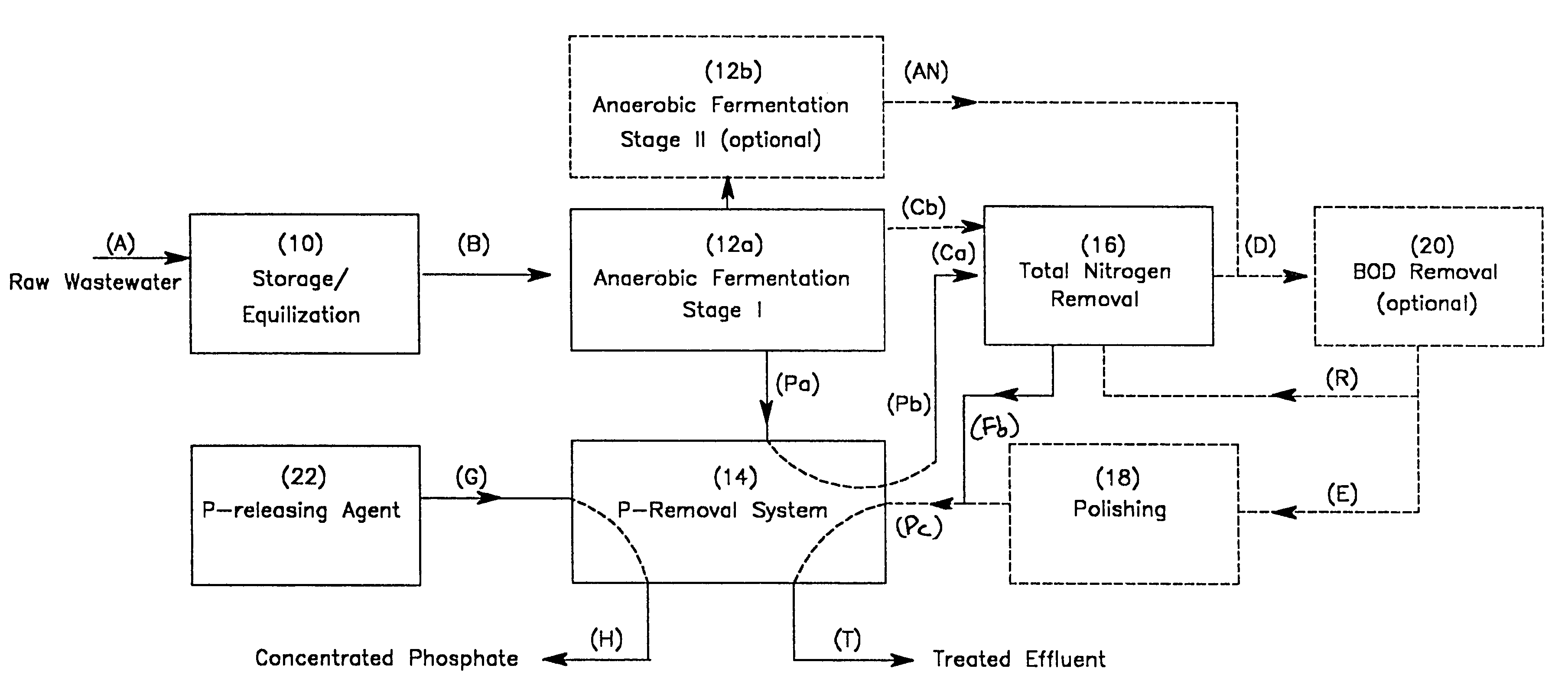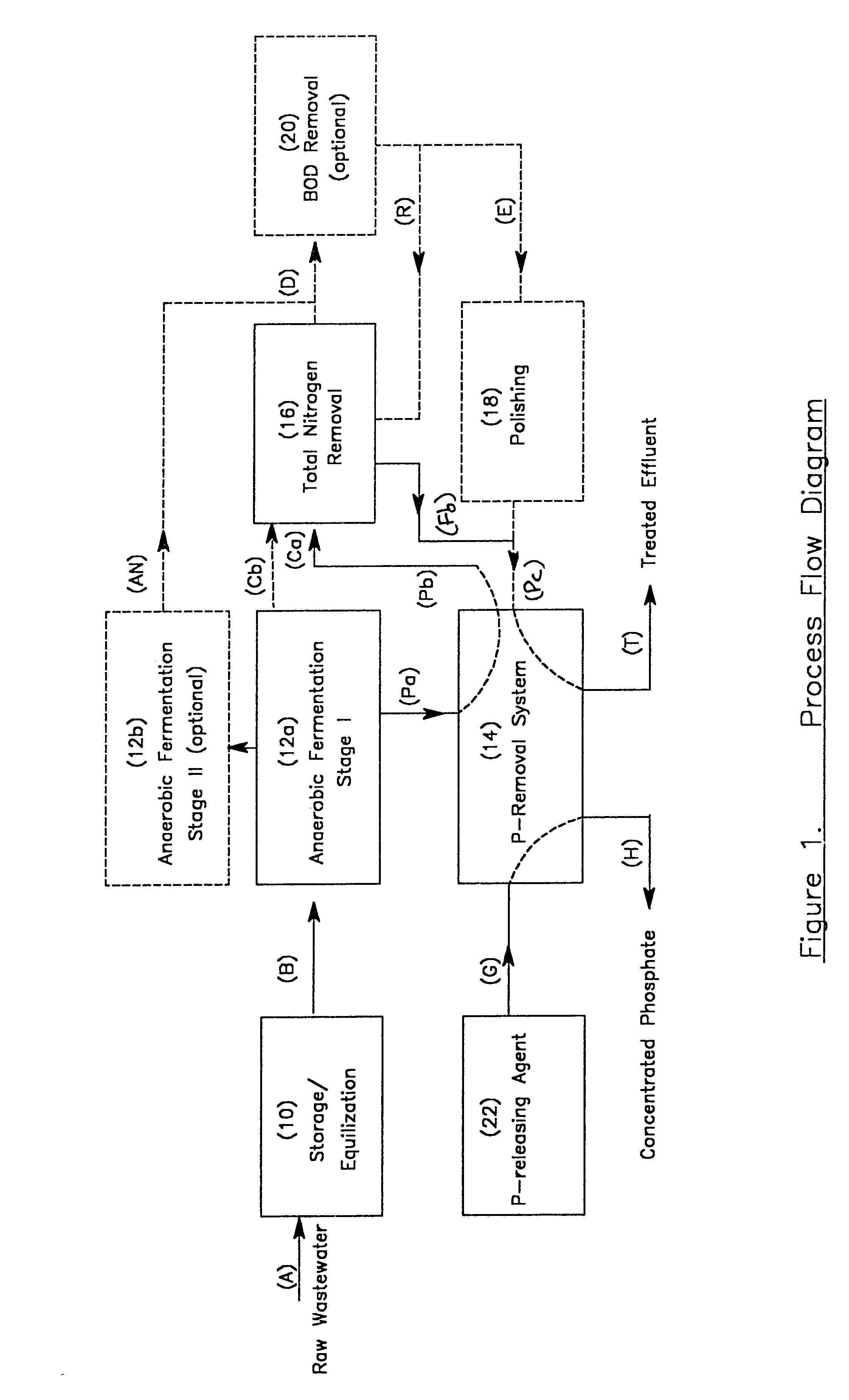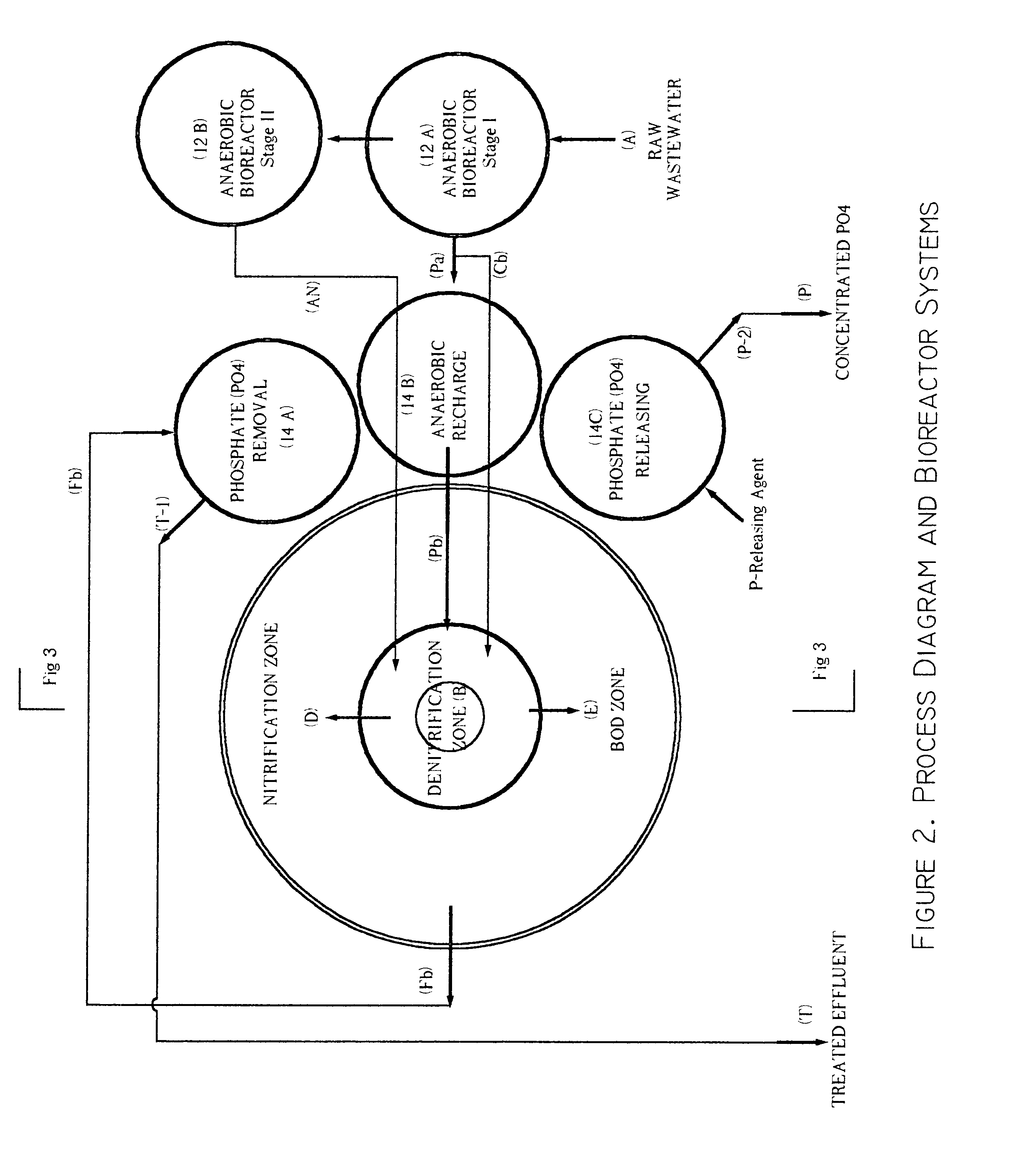Bioreactor systems for biological nutrient removal
a bioreactor and biological technology, applied in biochemistry equipment, biochemistry equipment and processes, water/sludge/sewage treatment, etc., can solve the problems of inability to use in a commercial scale, inability to carry out research on the methodology of immobilized biomass, and inability to achieve the effect of immobilization of biomass using this method
- Summary
- Abstract
- Description
- Claims
- Application Information
AI Technical Summary
Benefits of technology
Problems solved by technology
Method used
Image
Examples
Embodiment Construction
OF RETROFIT APPLICATION
In another aspect of the invention, the system may be designed that it allows dealing with different characteristics of wastewater and may be designed as a new treatment system or be retrofitted into existing biotreatment facilities. FIG. 5 shows that any of three typical existing system can be effectively converted into a biological nutrient removal system using the bioreactor system described in this invention. More precisely, each bioreactor system can be easily retrofit into one of the three typical existing biotreatment systems for N removal, P-removal or simultaneous N and P-removal. A nitrogen removal bioreactor (16) system described in FIGS. 2 and 3 can be added to the system after the secondary clarifier. Based on the treatment requirement, a polishing bioreactor system (20) may be used to ensure the effluent meet discharge criteria. For the wastewater with low N and high P, the nitrogen removal bioreactor may be removed from the process. Similarly, t...
PUM
| Property | Measurement | Unit |
|---|---|---|
| diameter | aaaaa | aaaaa |
| size | aaaaa | aaaaa |
| size | aaaaa | aaaaa |
Abstract
Description
Claims
Application Information
 Login to View More
Login to View More - R&D
- Intellectual Property
- Life Sciences
- Materials
- Tech Scout
- Unparalleled Data Quality
- Higher Quality Content
- 60% Fewer Hallucinations
Browse by: Latest US Patents, China's latest patents, Technical Efficacy Thesaurus, Application Domain, Technology Topic, Popular Technical Reports.
© 2025 PatSnap. All rights reserved.Legal|Privacy policy|Modern Slavery Act Transparency Statement|Sitemap|About US| Contact US: help@patsnap.com



